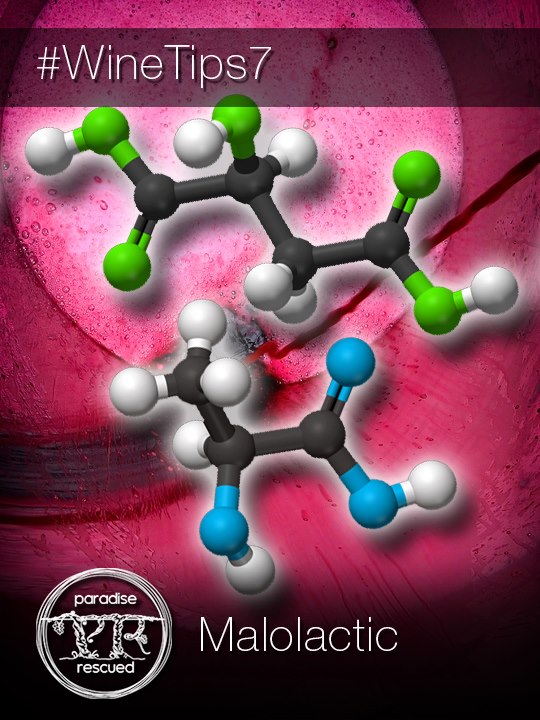Malolactic (or secondary) fermentation is a natural process that converts tart tasting naturally occurring malic acid into softer richer lactic acid.
Grape juice must (crushed grape juice skins, acids, sugar, bacteria, etc) contains malic acid, which remains in the wine after the main primary fermentation. Malic acid is quite a tart tasting acid which is very beneficial in sharp tasting refreshing dry white wines such as Sauvignon Blanc. With red wines where one wants a fuller, richer and rounder taste, malic acid is less desirable. Happily nature has a very elegant solution for us, called malolactic fermentation which produces softer lactic acid.
This secondary fermentation process occurs naturally at specific temperatures using lactic acid bacteria (extracted from the grape skins during winemaking). These bacteria consume the malic acids, converting them to lactic acid and liberating a small amount of Carbon Dioxide – hence fermentation. This reaction process only happens typically above 19 or 20 degrees Celsius. This means that, if the temperature in a cellar during late autumn or winter is cool, the wine will wait until the warmer spring time before starting the secondary fermentation.[/fusion_builder_column][/fusion_builder_row][/fusion_builder_container]
